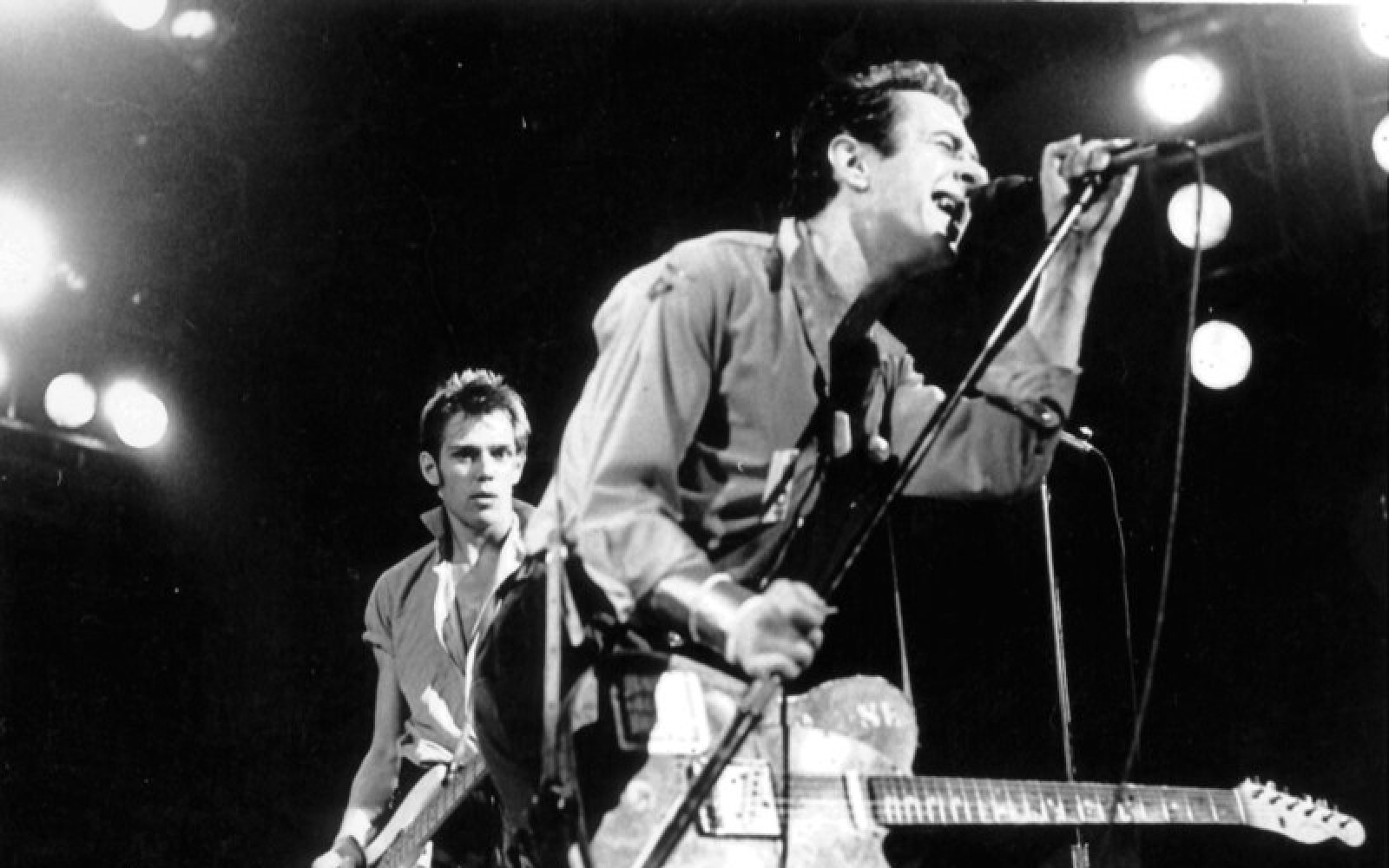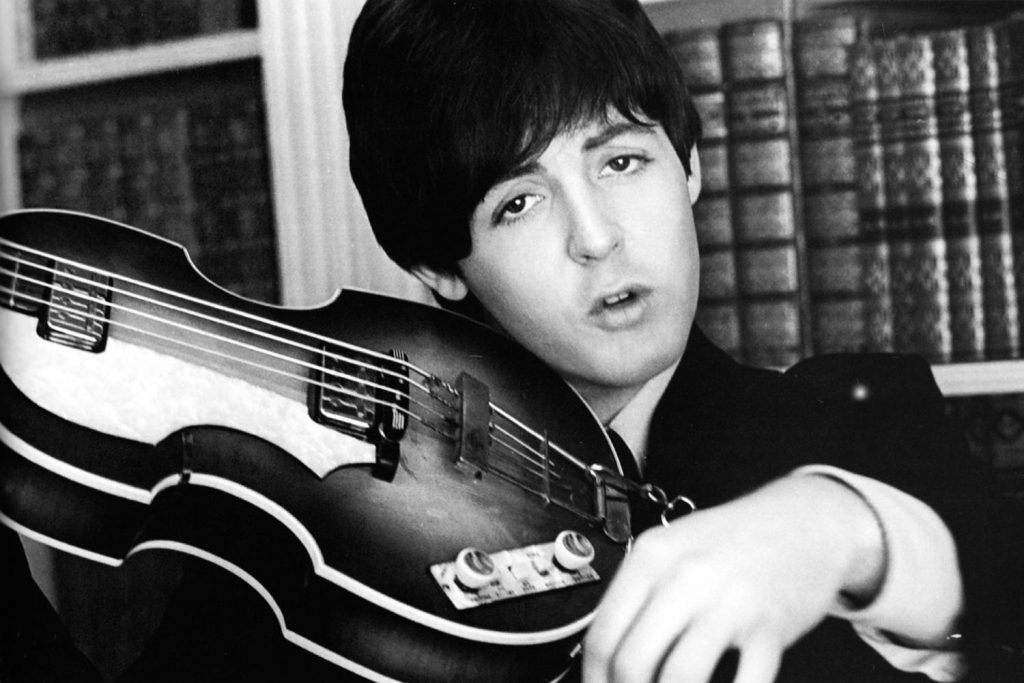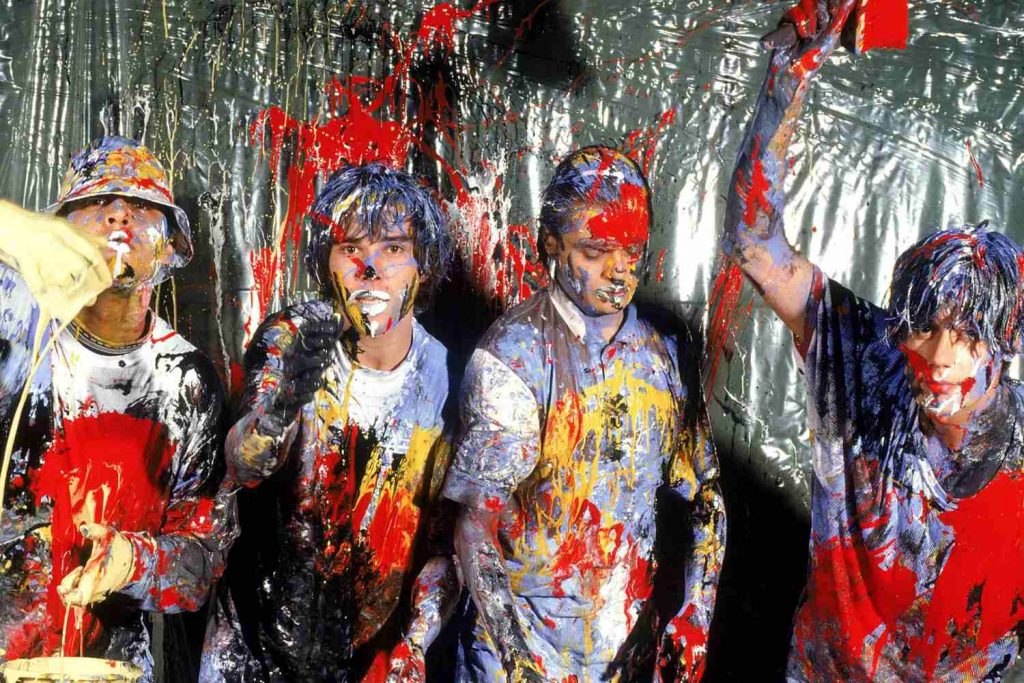When The Clash entered London's Wessex Sound Studios in 1979, there was a sense of disposition in the air.
None of the band’s members had much faith for the future, the gruelling economic woes of the latter half of the ’70s looked only to get more miserable in the next decade, and addiction was rife – despite the band’s overwhelming success in London Calling, there was a certain bleakness that shrouded its members.
Read all the latest features, columns and more here.
Armed with 19 genre-bending songs, a simple assortment of gear and a fuck it attitude, The Clash would go on to change the course of history with London Calling – an hour long collection of some of the finest songs to ever come out of the UK, leaving a trail of critical acclaim and an immeasurable influence in its wake. As the classic punk rock double LP surpasses its 40 year milestone, we take a look at the gear used by London’s finest sons The Clash to record the enduring wonder that is London Calling.
1966 Fender Telecaster
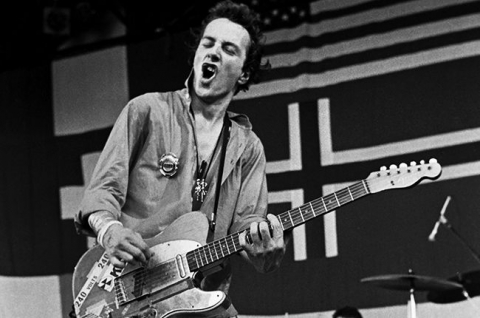
Vocalist and rhythm guitarist Joe Strummer was everything a punk frontman should be: abrasive, conscious, heavily accented, and weirdly charming. Throughout the majority of his career, Strummer favoured a 1966 Fender Telecaster as his main guitar, mainly due to his penchant for the bridge pickup of the instrument when paired with a booming clean combo amp.
Strummer’s ’66 Telecaster is instantly recognisable due to its sketchy paint job – he had a mechanic friend refinish the sunburst instrument with black and grey automative paint (very punk), and amassed a collection of stickers on the body of the guitar throughout his career, which he played at almost every show until his passing in 2002.
Gibson Les Paul
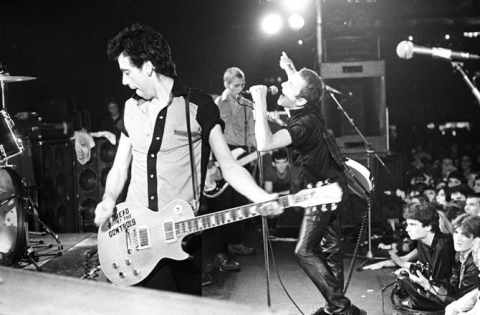
As lead guitarist, co-founder and songwriter for The Clash, Mick Jones played an essential part in creating London Calling, particularly via his constant experimentation with effects pedals and different guitars in the studio while creating the record. While Jones’ bashing of a P90-equipped Les Paul Jr. defined the early sound of The Clash, he adopted a much more intricate playing style for London Calling, recalling elements of reggae, funk and lounge jazz into his playing.
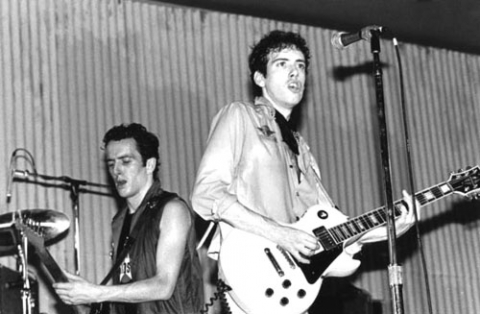
Throughout the majority of the recording process, Jones would alternate between a selection of Les Pauls, including a sunburst ’58 Standard, a black ’65 Custom, and two ’70s Custom models in red and white.
Fender Esquire
Although Strummer definitely favoured his iconic ’66 Tele while recording the LP, live footage from around the recording of London Calling suggests that Strummer also heavily relied upon a ’50s Fender Esquire from between 1979-1981. Boasting only a bridge pickup (which many Tele players would argue is all you need), Strummer modified his Esquire by giving it a racing stripe finish, possibly inspired by the motorcar finish of his other Tele.
Late ’70s Fender Stratocaster
Various archival sources suggest that in addition to his many Les Pauls, Jones also heavily used a late ’70s black Fender Stratocaster while in the studio recording London Calling, which was gifted to him by Fender, and was used on ‘Jimmy Jazz,’ which can be seen around the 3.20 mark in the above video. Fender also sent bassist Paul Simonon a white Precision Bass at the same time which you probably recognise – but more on that later.
1950s Gibson ES-295
Made famous by Elvis Presley’s chief shredder Scotty Moore, Jones used an incredibly rare Gibson ES-295 sparingly in the studio while recording London Calling, and there’s never been any footage found of him playing it live. However, Jones does use this guitar, which appears to have been given a white refinish, in the band’s music video for the title track of the album ‘London Calling’ – bet you can’t get that riff out of your head.
1970s Fender Precision Bass
If you had to rack your brains to think of the most iconic bass guitar of all time, then you’d be thinking too hard – there’s no doubt that Paul Simonon’s white P-Bass is the be all and end all of four stringed instruments.
Although Simonon was initially reluctant to adopt the P-Bass as his primary instrument – both The Sex Pistols’ Sid Vicious and The Ramones’ Dee Dee Ramone also played white P-Basses – Simonon required a hefty model with a punchy tone to inject some beefiness behind the dual guitar play of Jones and Strummer.
Inscribed with the word ‘PRESSURE’ on the bass’ upper horn and modified with a custom painted pickguard, the bass quickly became a favourite of Simonon’s, using it as his main live and studio bass until one fateful show at New York’s Palladium in 1979.

Frustrated by the venue’s bouncers not allowing punters to stand and dance throughout the show, Simonon let out his rage ontsage by pulling a Pete Townshend and obliterating his adored P-Bass in front of the crowd – a moment which was captured to the side of stage on film by photographer Pennie Smith.
The ensuing image was chosen as the cover for London Calling, with many critics drawing parallels to the image and the album’s lyrical themes of disillusion, boredom, protest and frustration, with many considering it to be the ultimate rock n’ roll photograph.
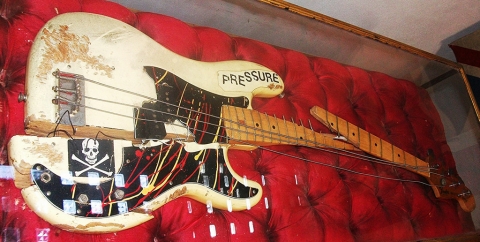
Epiphone Rivoli
Possibly due to his previous P-Bass’ obliteration, Simonon used a hollowbody Epiphone Rivoli to shoot the music video for ‘London Calling’.
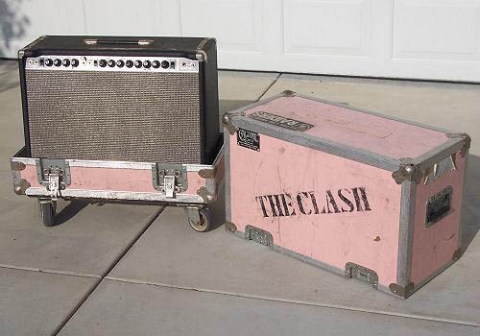
Across London Calling, Strummer’s penchant for combo amps can be easily heard – his favourite tone was an unadulterated, cranked clean single, using his aggressive right hand technique to add further dynamics to his playing.
While Strummer began using a Musicman 212-HD 130 soon after the recording of London Calling, which he stuck with for most of his career afterwards (and was later purchased by Strummer super-fan and Pearl Jam frontman Eddie Vedder), various sources claim that Strummer used a Fender Twin Reverb to nail the clean tones heard across the album.

Jones, on the other hand, loved experimenting with amp sounds, and often rotated different rigs. However, for the recording of London Calling, he tended to stick with Mesa-Boogie combo amps, particularly the Mark I and Mark II, which he would use to feed a Marshall 4×12 cabinet for a roaring tone.
Like many punk bassists of the era, Simonon chose a simple yet effective amplification solution: the Ampeg SVT. Paired with a monstrous fridge cabinet speaker, Simonon often tweaked his setup on the fly throughout live gigs to change his tones between the collection of biting punk rock tracks and rollicking reggae bops heard on the album.
Effects
Mainly spurred by Mick Jones’ mission to expand the band’s sound beyond the typical parameters of punk rock, London Calling features the use of several effects which many wouldn’t consider to be very punk – including the warbling chorus tones heard on ‘Lost In the Supermarket’ and ‘Koka Kola,’ courtesy of a Roland RE-501 Chorus Echo unit.
Jones, possibly interested by its use throughout reggae and dub music, also frequently used a Roland-201 Space Echo unit on the album, which can be distinctively heard on the hidden track ‘Train In Vain’.
Jones also began dabbling with a variety of effects pedals around this era, particularly the MXR Phase 100, which can be heard heavily across the album – especially in moments like the bridge in ‘The Clampdown,’ the solo in ‘Spanish Bombs,’ and the majority of ‘Rudie Can’t Fail’.
Although not as well known in the history of rock as Strummer, Jones and Simonon, Topper Headon’s energy behind the kit on London Calling is undeniably a massive contribution to the overall impact of the album. Primarily jazz influenced, Headon’s tendency to swing his eighth notes perfectly complimented Jones’ more tender guitar moments, while still maintaining the ability to get heavy to keep up with Strummer and Simonon. Talking to Mike Dolbear, Headon described his drum setup, which he used all the way up until 1982’s Combat Rock before he was fired from the group.
“When I joined The Clash I had a silver Premier kit that I brought up from Dover,” he said. “They offered me the gig and I thought, I aint taking my kit on the road. It wasn’t like they said to me, ‘You’re a full-time member,’ it was just – come on the White Riot tour! So I thought, I’m not taking this kit on the tour and then get slung out or – if things didn’t work out, what was I going to do? So I said, ‘OK then, but I want a new drum kit,’ so they said alright. Baker, my drum tech, and I went down to Henrit’s on Wardour Street and there was a big silver, mirror finish Pearl kit there – I thought, I’ll have that! So, we bought it and I used that kit for the whole of the time that I was with The Clash… I always used Zildjian cymbals, 15 inch hats and stuff. Paiste I always found a bit light and thin.”
